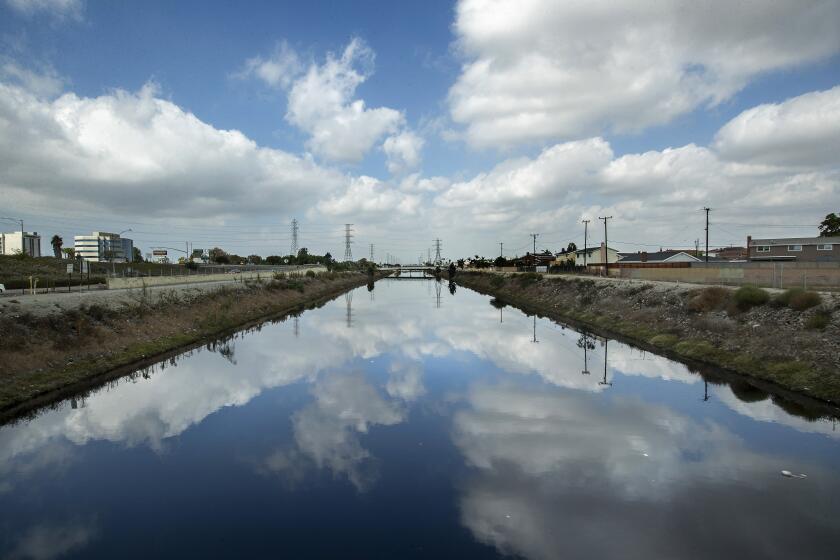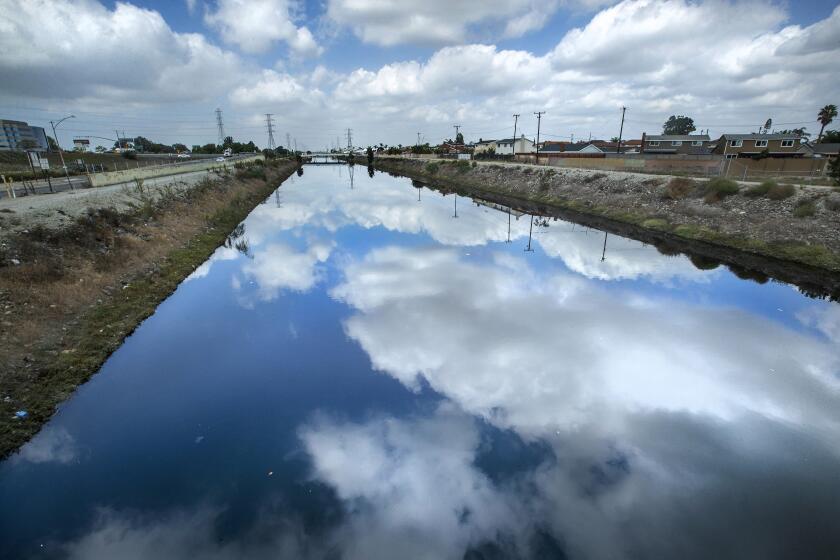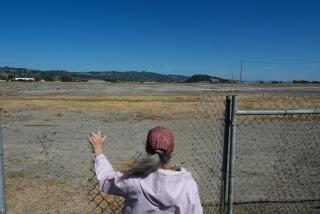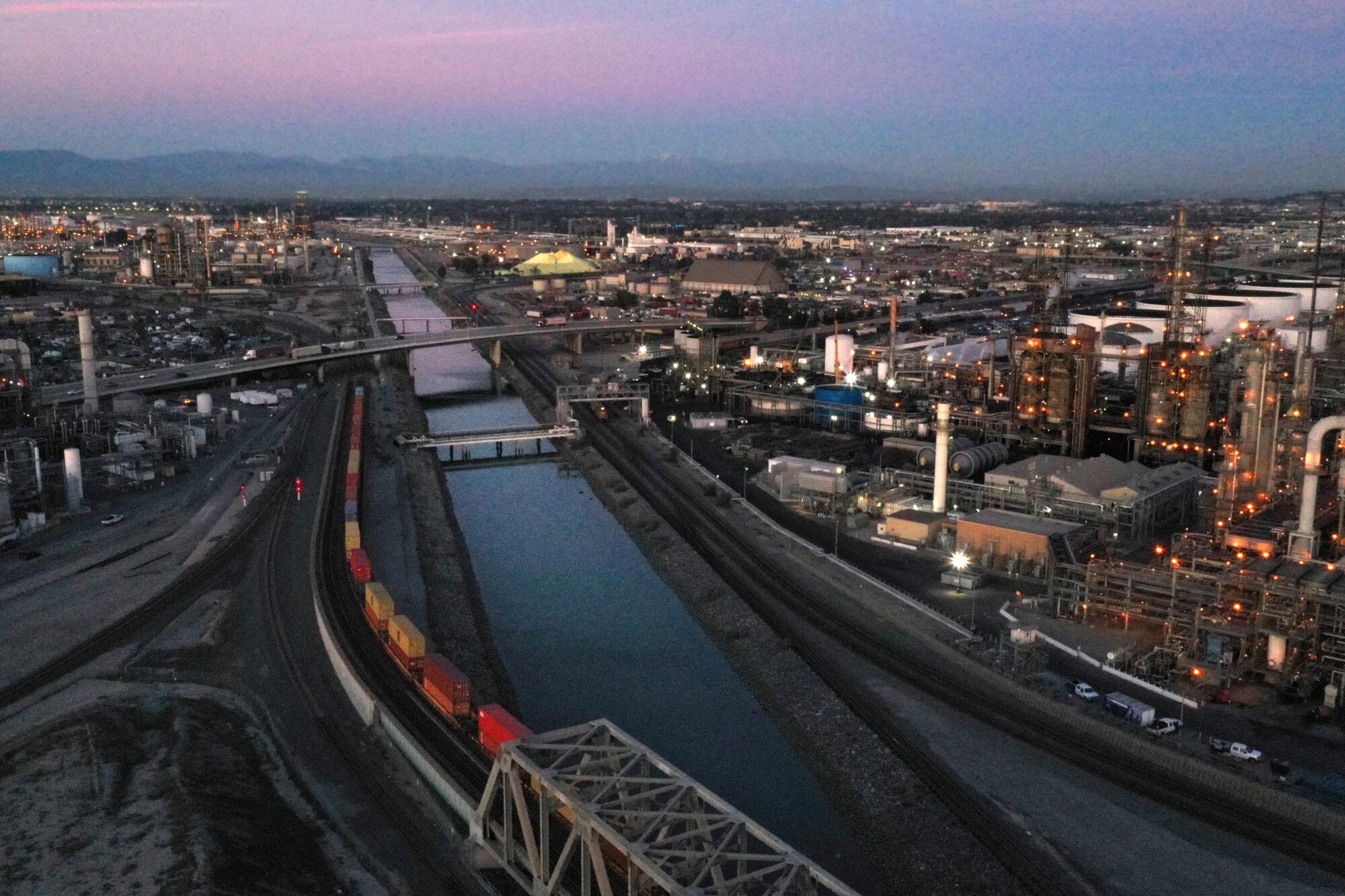
Nyla Olsen’s eyes moisten with rage as she recalls the day in early October when a surge of putrid water rolled out of the Dominguez Channel and turned life in Leeward Bay Marina into “a horror movie.”
Fish were gasping for oxygen at the surface of the water or floating belly up, she said. Boat hulls were slathered with sticky black slime. An octopus died after trying to escape by climbing onto a vessel, she said.
“I called every emergency response outfit I could think of for help, including the U.S. Coast Guard,” said Olsen, owner of the Chowder Barge — the Wilmington marina’s heart and soul.
“But all I got were versions of, ‘Sorry, there’s nothing we can do because it’s coming from up the county flood control channel and out of our jurisdiction,’” the 61-year-old said with a sigh. “I felt utterly helpless.”
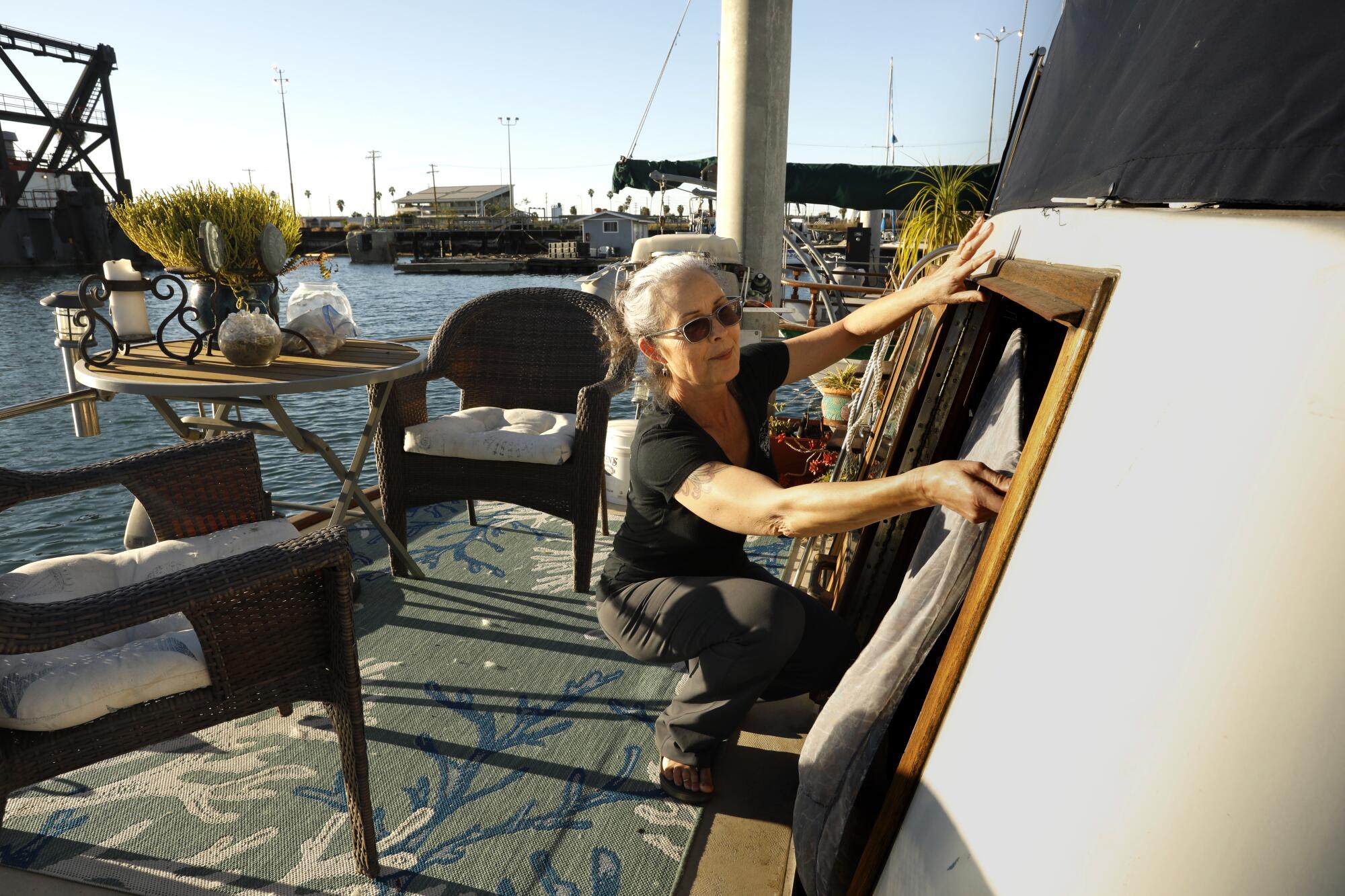
Around that same time, air quality officials were being bombarded with thousands of calls from working-class residents upstream in Carson, Gardena, Torrance, Redondo Beach, Long Beach and Wilmington. Many complained of respiratory ailments, nausea and other symptoms due to a foul smell that vexed neighborhoods in the South Bay and Harbor region.
“I woke up choking,” recalled Carson resident Monique Alvarez, 40. “My 3-year-old daughter was curled up in a ball at the foot of my bed crying, ‘Mommy, my tummy hurts.’”
Alvarez and others have long complained of emissions from nearby refineries and chemical plants, but residents say this was a far stronger and more disturbing odor. It was as though “there was something invisible and terrifying lurking in every room,” Alvarez said. “I never felt more afraid in the home I was born and raised in.”
It took officials two months to figure out what caused the overpowering stench: A massive fire that ripped through a Carson warehouse had unleashed a flood of toxic runoff.
Ethanol, isopropyl alcohol, benzene and other chemicals were flushed into nearby storm drains by fire hoses and then dumped into the channel, where they triggered a chemical and biological reaction that released large amounts of hydrogen sulfide gas, authorities say.
The business had been cited numerous times for illegally storing mountains of hand sanitizer, bacterial wipes and other flammable products before the fire erupted and sent up a column of smoke that was visible for miles.
The incident has left thousands of residents indignant. They believe government agencies meant to oversee their health and safety did far too little, far too late.
A similar disaster in a wealthier, whiter community, they say, would have been met with a more urgent response.
“It’s chemical and psychological warfare that I feel we are fighting here in our communities — in our homes,” said Alvarez, who has since joined a 10,000-person class-action suit.
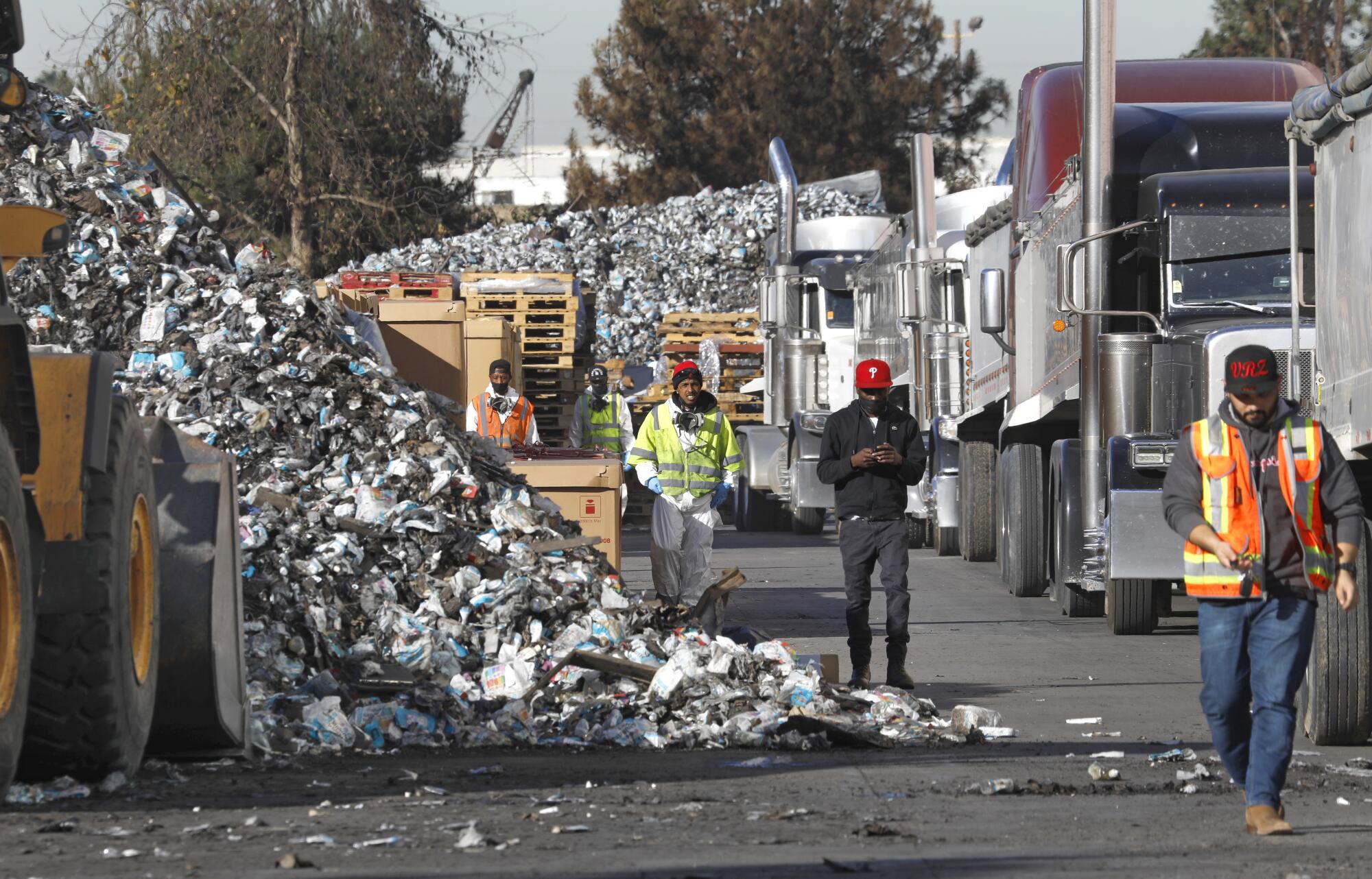
The toxic spill that plunged thousands of Los Angeles County residents into misery late last year was scarcely unique, however. It was just the latest in a long string of environmental disasters that have plagued the 15-mile Dominguez Channel — an area where effective enforcement has always been muddled by industry recklessness, official neglect, overlapping government jurisdictions, and a hydrology prone to flooding and offensive odors.
What is different this time is that officials are vowing to seek justice for the predominantly Latino, Black and Asian neighborhoods that straddle the flood channel, which drains runoff from some of the region’s densest urban areas into Los Angeles Harbor.
Subscribers get early access to this story
We’re offering L.A. Times subscribers first access to our best journalism. Thank you for your support.
“This disaster really is all about social justice and racial equity for people who live along the channel,” said Mark Pestrella, the L.A. County public works director. “It originated from man-made senseless errors and disregard for law by entities operating upstream.”
Pestrella’s agency, along with Los Angeles County and the Fire Protection District, has filed a lawsuit against 10 defendants connected to the warehouse. They are seeking to recover cleanup costs totaling more than $143 million.
“I see this as an opportunity to daylight racial inequities, and the actions of the people responsible,” Pestrella said.
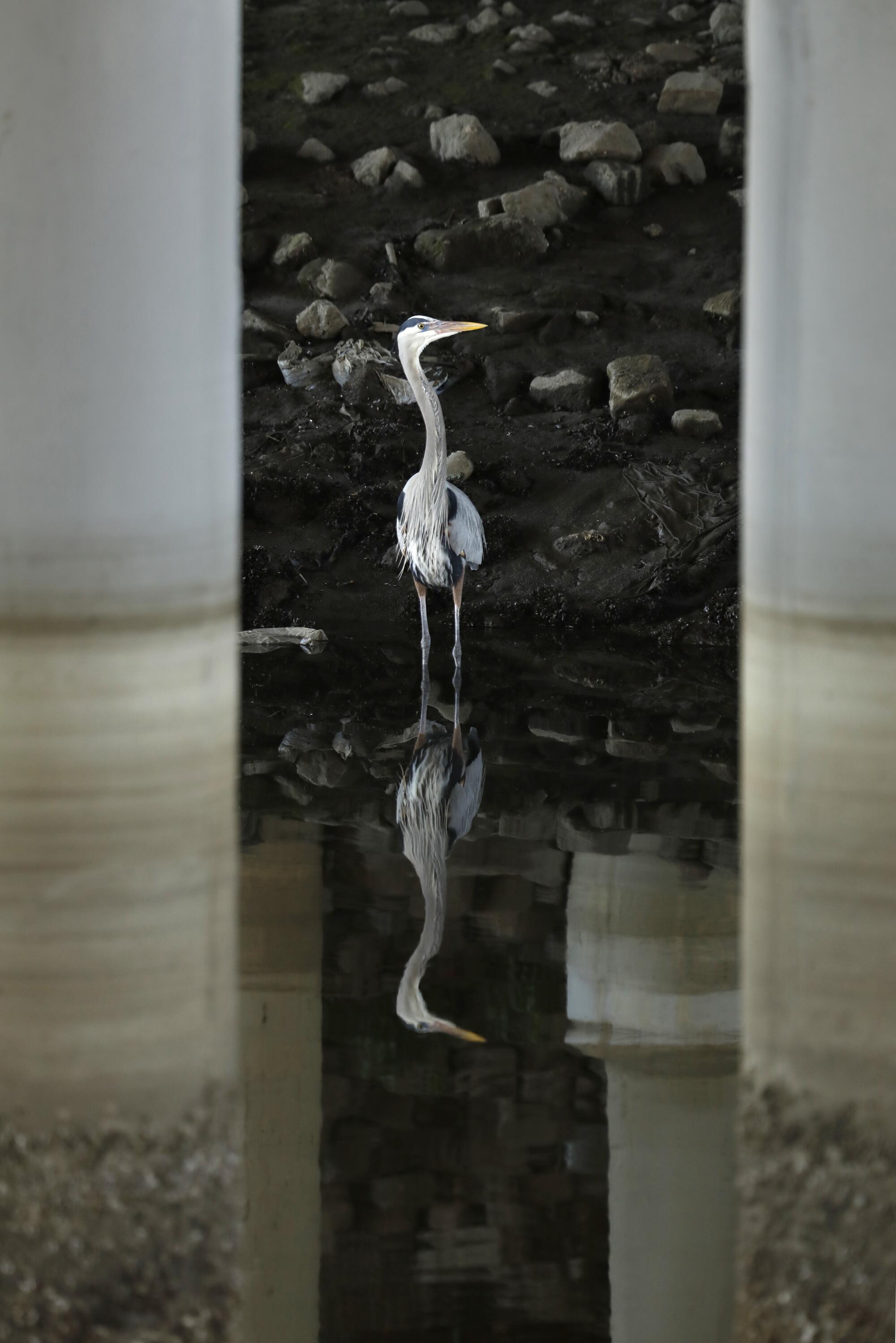
If one river mirrors the environmental travails of working-class minority communities south of downtown L.A., it’s the Dominguez.
It was a swampy slough that meandered through marshes and mud flats up until the early 20th century, and carried the name of a racist slur. When the Los Angeles County Board of Supervisors formally changed its name in 1938, development of the area began in earnest — and so did the channel’s problems.
In 1941, a “lake of fire” flared up in the surrounding wetlands when it was sparked by firefighters burning oil seepage from a quake-damaged pipeline. On other occasions, sludge and trash that were washed into the surrounding swamplands produced a stench that made life almost unbearable in local neighborhoods.
After the boom years of World War II, residents pleaded with government agencies to crack down on refineries, chemical plants and other industries that had gravitated to the area and were accustomed to dumping toxic and carcinogenic chemicals into the channel. One of those companies was Montrose Chemical Corp. of California, which manufactured DDT for several decades.
A new generation of scientists have uncovered barrels containing DDT, a toxic pesticide banned decades ago, dumped into the deep ocean.
Problems along the channel were not confined to chemicals, however. Frequent incidents of flooding persuaded county officials to convert the waterway into a flood control channel lined with rocks in the 1960s — an act that attracted even more development to the area.
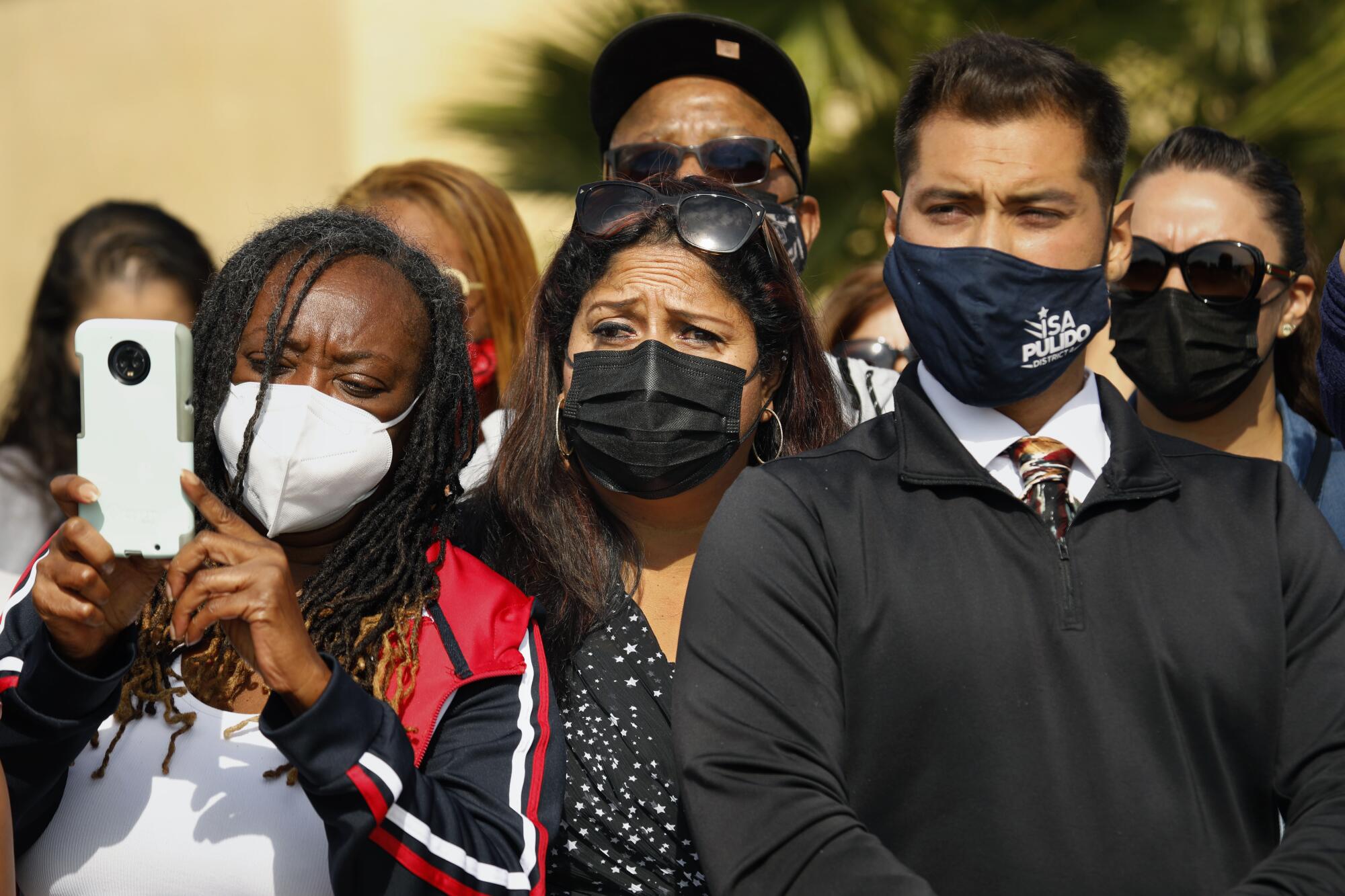
Today, the channel flows south from its origin at West 116th Street in Hawthorne, passes beneath the parking lot of El Camino College in Torrance, skirts the Goodyear Blimp base in Carson, and hugs the roaring 405 Freeway for several miles. From there, the channel proceeds along the vast Marathon oil refinery and a Wilmington sulfur company before it empties into Leeward Bay Marina.
At various points along the channel’s course, underground culverts and storm drains dump discharge from more than 100 industrial permit holders. Forty percent of the channel’s 72-square-mile watershed is occupied by warehouses and industrial facilities, making the waterway a witch’s brew of debris, bacteria, pesticides and heavy metals.
It wasn’t until last fall that residents and municipal officials were brutally reminded of yet another of the channel’s hydrologic quirks: Because much of the waterway flows at sea level, it is greatly affected by tidal flows, which prevent the channel from discharging freely into the sea.
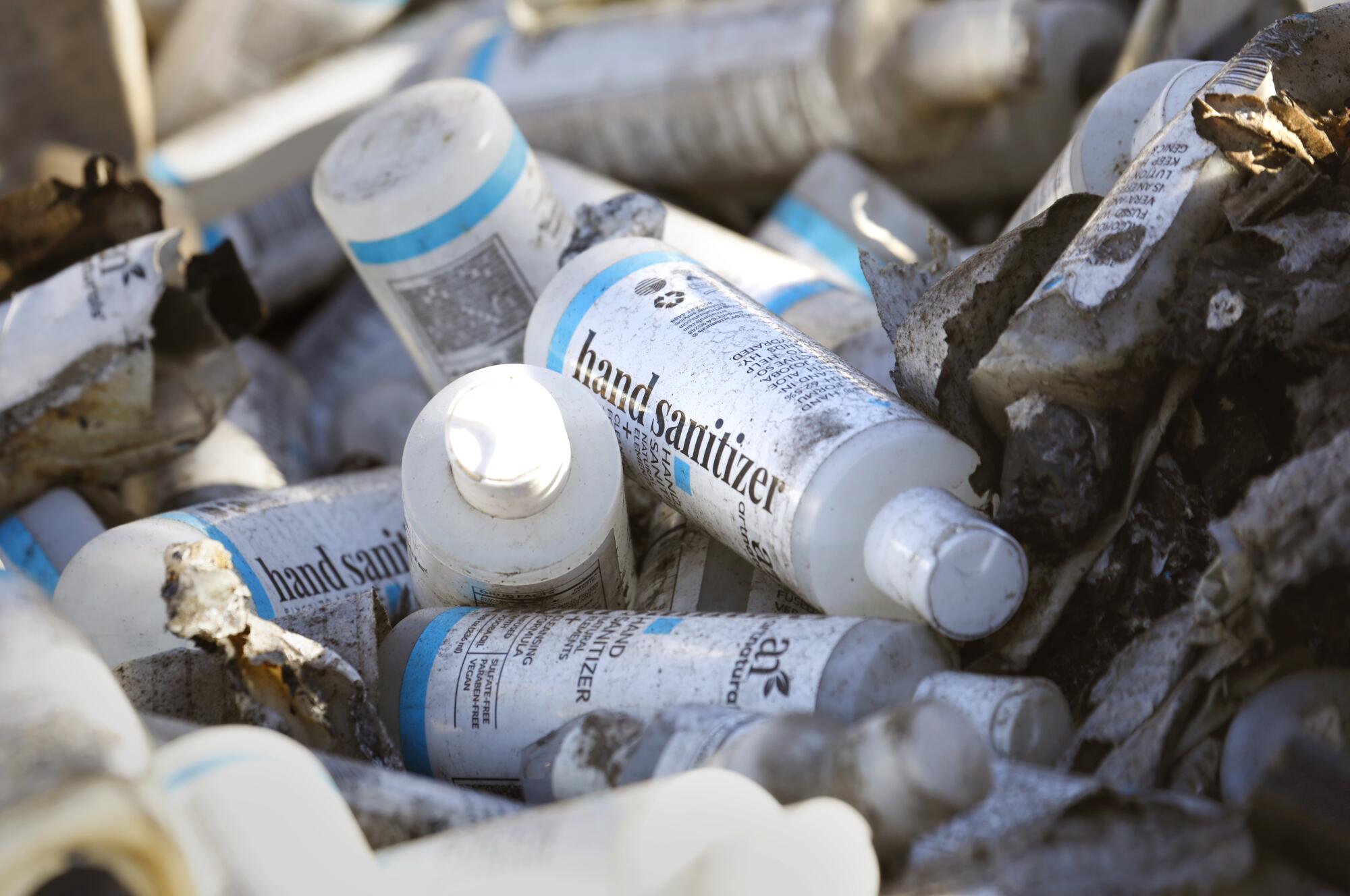
A class-action lawsuit filed by San Francisco attorney Gary Praglin suggests the roots of the disaster stretch back to February 2020, when COVID-19 was declared a pandemic and local health agencies urged the use of hand sanitizer to combat the spread of the virus.
To meet the soaring demand, companies began producing hand sanitizer — many for the first time. One such company was Artnaturals, a Carson cosmetics outfit that advertised itself as wanting to “free beauty from high prices, toxic chemicals and all-around bad vibes.”
Online, the company hawked a large variety of sanitizing products, including its “safety set”: a package consisting of 50 face masks, 100 hand sanitizing wipes, two 8-ounce bottles of hand sanitizer, and a 1-gallon jug of “Scent Free” hand sanitizer. As the pandemic wore on, mountains of these products began piling up outside the warehouse on South Avalon Boulevard. By March 2021, pallets were stacked 15 to 20 feet high, leaning over and spilling onto the ground and blocking vital exits, according to the lawsuit.
On the afternoon of Sept. 30 — one day after fire authorities faulted the company for failing to deal with five months of health and safety citations — fire erupted among the piles of sanitizer.
The air quality district issued violation notices to four companies and L.A. County over a smell from the Dominguez Channel that has sickened Carson residents for weeks.
Tens of millions of gallons of water sprayed by 200 firefighters to fight the blaze flushed huge amounts of charred and contaminated debris through drainage systems and into the channel more than a mile and a half away, county officials say.
The influx depleted the channel’s oxygen, resulting in the rapid decay of vegetation and an explosion of bacteria, which produced colossal amounts of hydrogen sulfide — a flammable, colorless and smelly gas that can be toxic at high levels.
The influx of ocean water each day at high tide hampered the ability of the toxic runoff to flow out to sea, county officials say.
Ironically, several days after the fire, the U.S. Food and Drug Administration warned consumers to “immediately stop” using Artnaturals hand sanitizer, saying it contained unacceptable levels of the carcinogen benzene, as well as other contaminants.
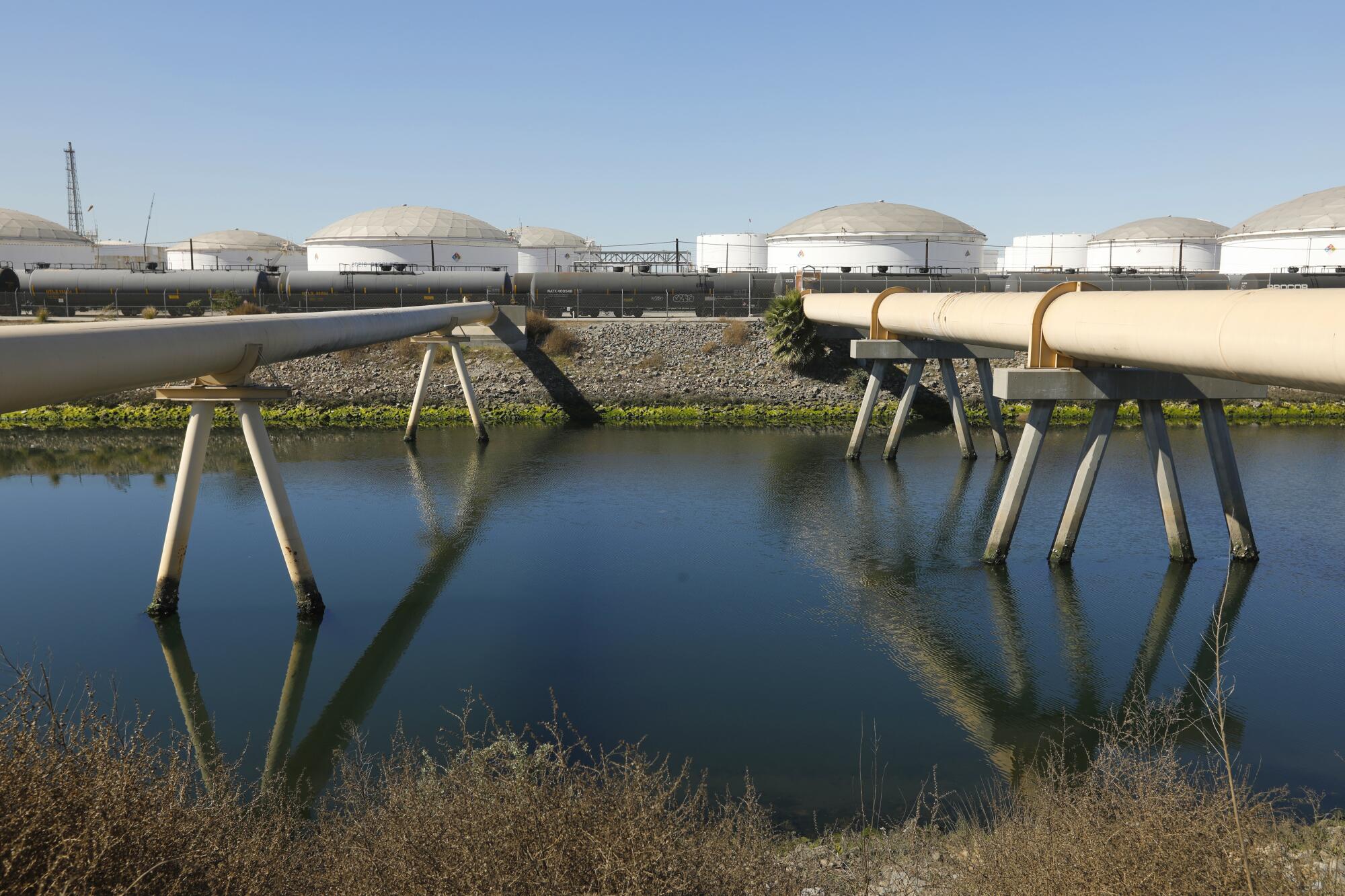
The fire and its toxic aftermath have spawned multiple lawsuits. In addition to the county’s filing, two class-action lawsuits accuse Artnaturals and the warehouse owner, Prologis Inc., of negligence. (One of those suits also names Marathon Petroleum Corp. as defendant, and accuses the refinery operator of releasing elevated levels of hydrogen sulfide during the same time period.)
“Lawsuits are the only path to environmental justice,” said Chris Guldjian, an attorney representing 3,000 residents in one of the class actions. “Businesses and government agencies have to hurt, or nothing will change.”
ArtNaturals executives, whom court documents identify as Akiva Nourollah, Yosef Nourollah, Yehuda Nourollah and Yaakov Nourollah, could not be reached for comment. However, Jennifer Nelson, a spokesperson for Prologis, said her company has been trying to evict the tenant since it “quit paying rent in March 2021.”
The lawsuit accuses the warehouse’s owners and tenants of negligence in connection with the storage of hazardous and flammable materials.
“Our eviction efforts have been hindered by L.A. County’s commercial eviction moratorium, which ended Jan. 31,” she said. Prologis filed another eviction action after the moratorium ended, she said.
In the meantime, a mountain of charred debris including hundreds of thousands of 8-ounce bottles of hand sanitizer — roughly 7 feet high, 100 yards wide and a block long — remains in and around the warehouse.
Crews hired by Prologis have been methodically sorting through the mess by hand, separating solid and flammable liquid waste before disposal in certified facilities and landfills in California, Arizona and Nevada. Local storm drains have been plugged to avoid spilling more contaminants into the channel in the event of a strong winter storm.
“We expect to be done by June,” Nelson said. “We will be seeking reimbursement from the tenant, which holds responsibility for this situation and the cleanup.”
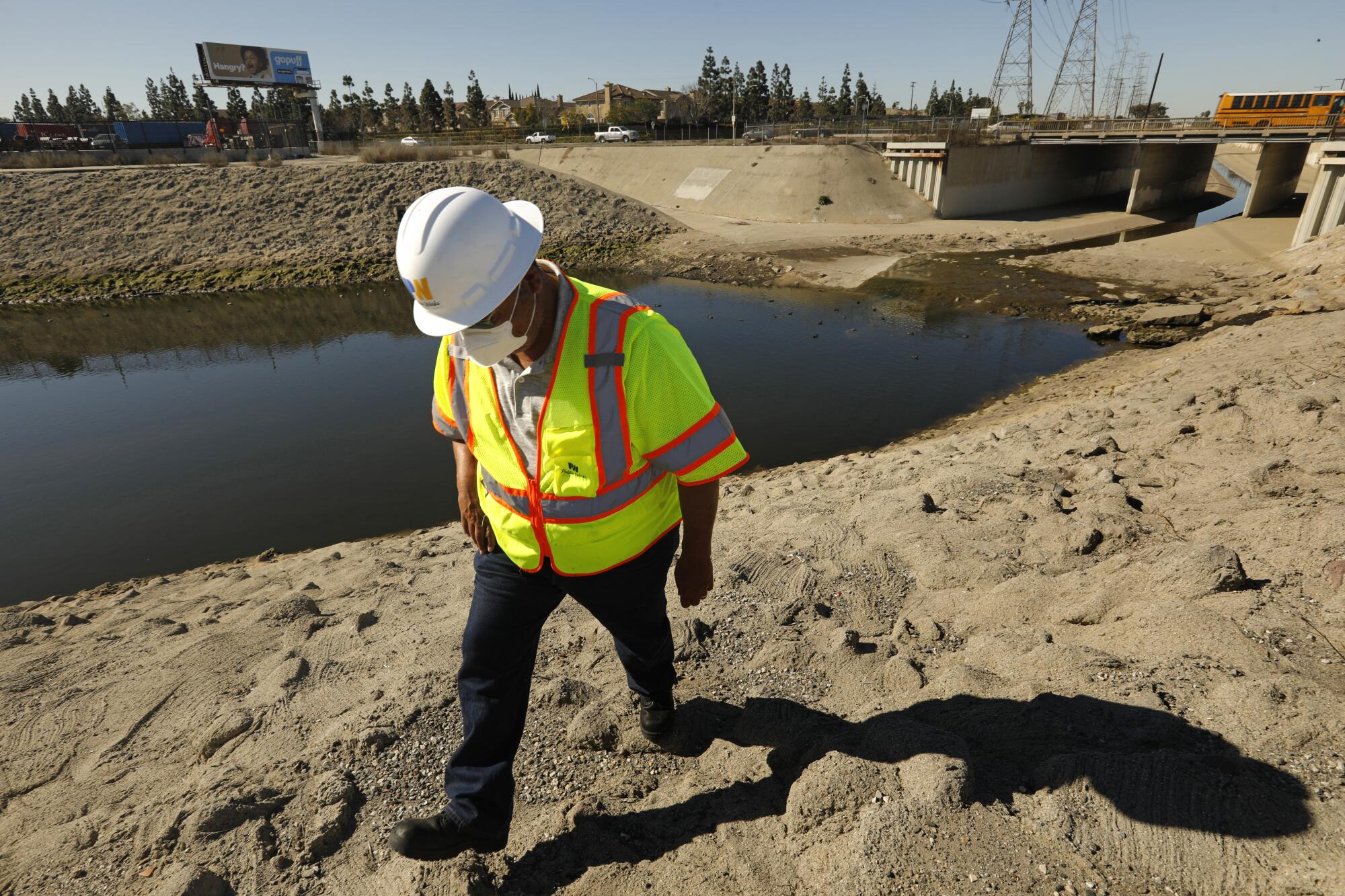
It may take months yet to determine the spill’s cumulative toll on urban wildlife in and around the waterway.
A tour of the channel on a recent weekday led by Greg Sarpy, a regional superintendent for county public works, suggested that life had returned to normal for some species.
Spotted western sandpipers hunted for insects along the edges of the stream strewn with trash. A coyote peered out from behind the fronds of a scraggly palm tree irrigated by water seeping from sewer outfalls. A roadrunner dashed across a swath of gravel and cracked pavement at the base of a mountain of brilliant yellow sulfur. Cormorants bulked up on small fish that had returned to a stretch of the channel that two months ago was uninhabitable.
Farther south in Leeward Bay Marina, however, things remained somber.
The “live-aboards” who make their home there in scuffed-up boats bobbing over the most polluted water in the state are willing to endure seeing just about anything float by after it rains: dead dogs, artificial limbs and, once, even a dead body.
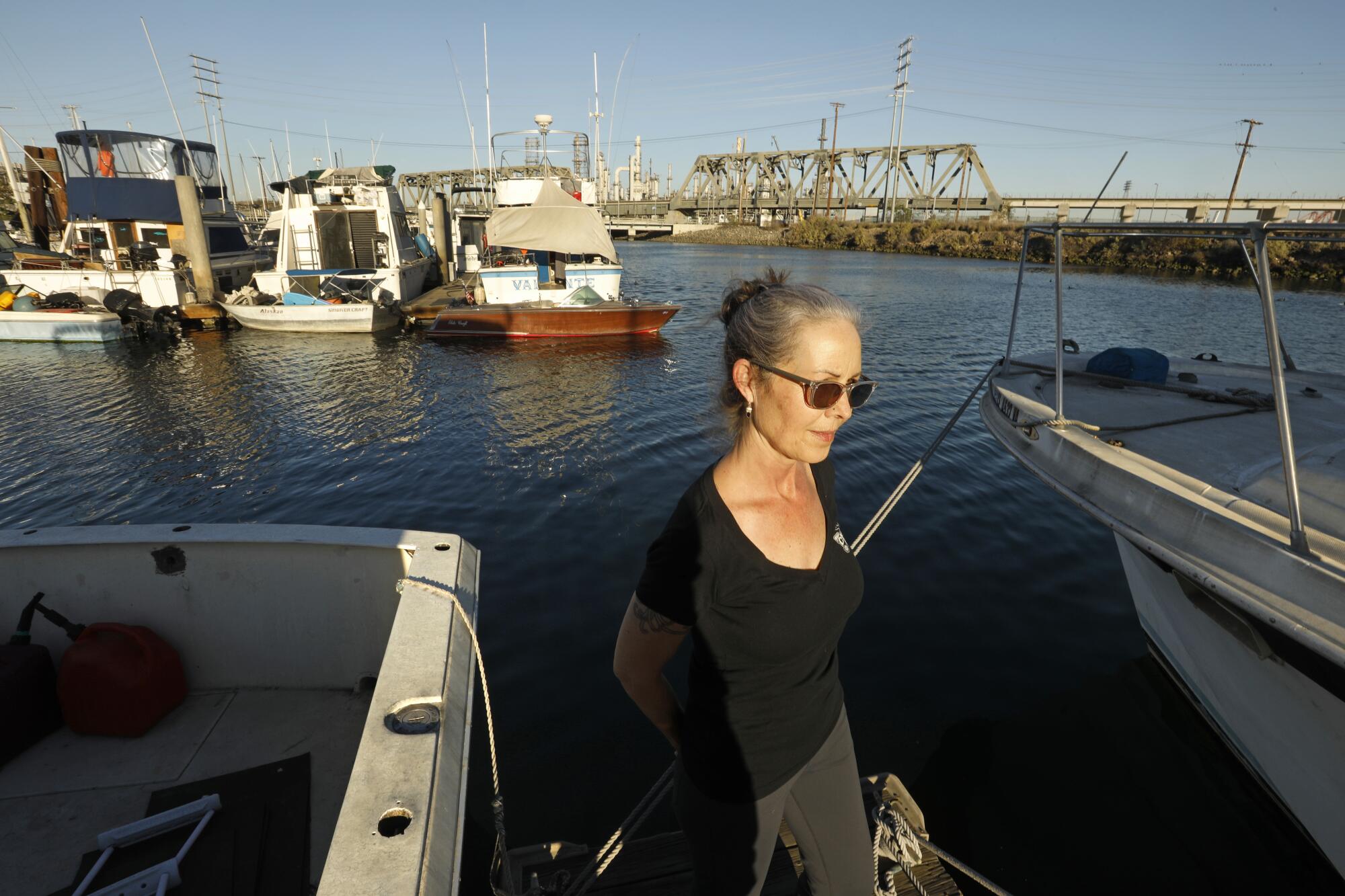
But this spill was different.
“The water turned cloudy and black, there were dead fish everywhere, and birds just took off,” recalled Margaret Alsop, 42. “I thought, ‘What the hell is going on?’”
The more she has learned about the incident, the sadder she has become.
“The neglect for people and wildlife along the Dominguez Channel is shocking and heartbreaking,” she said.
